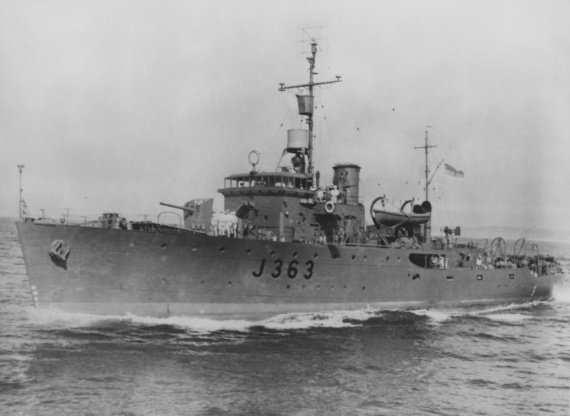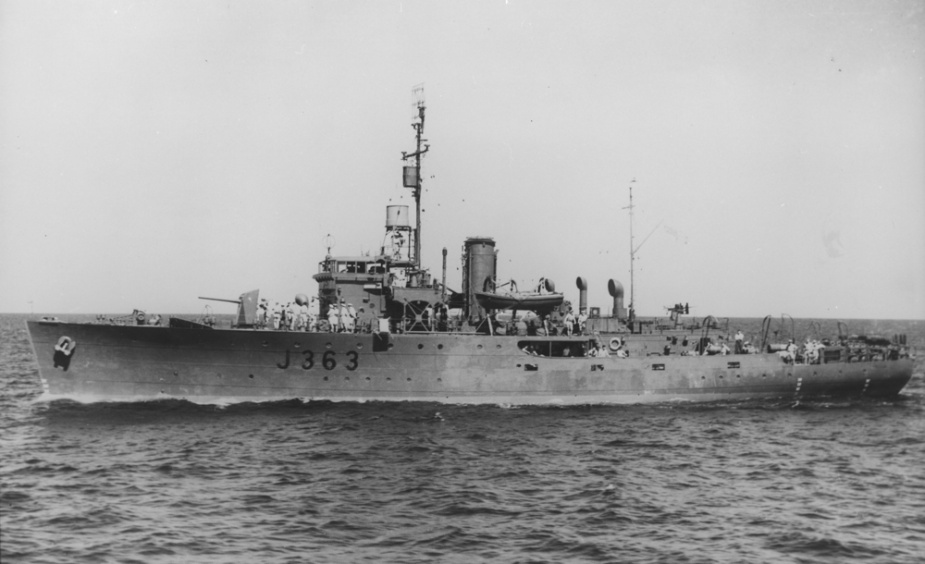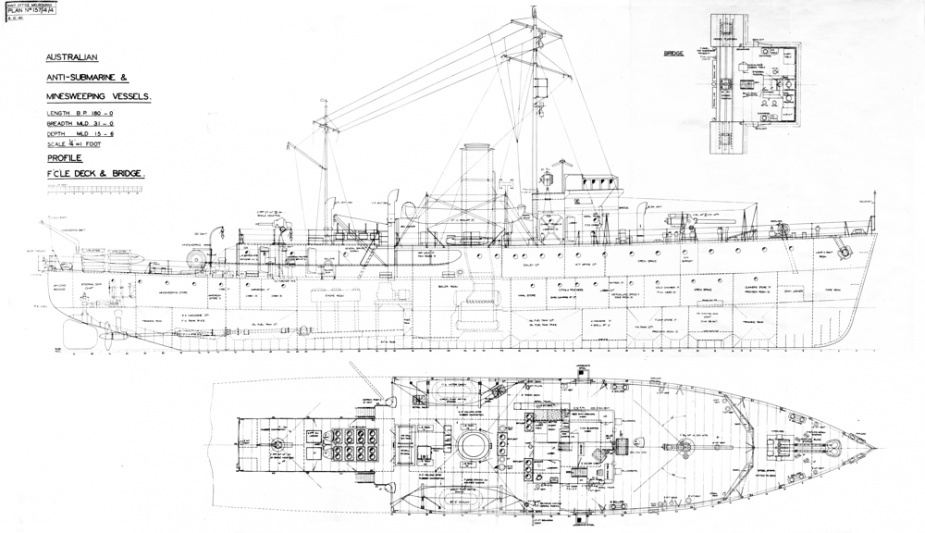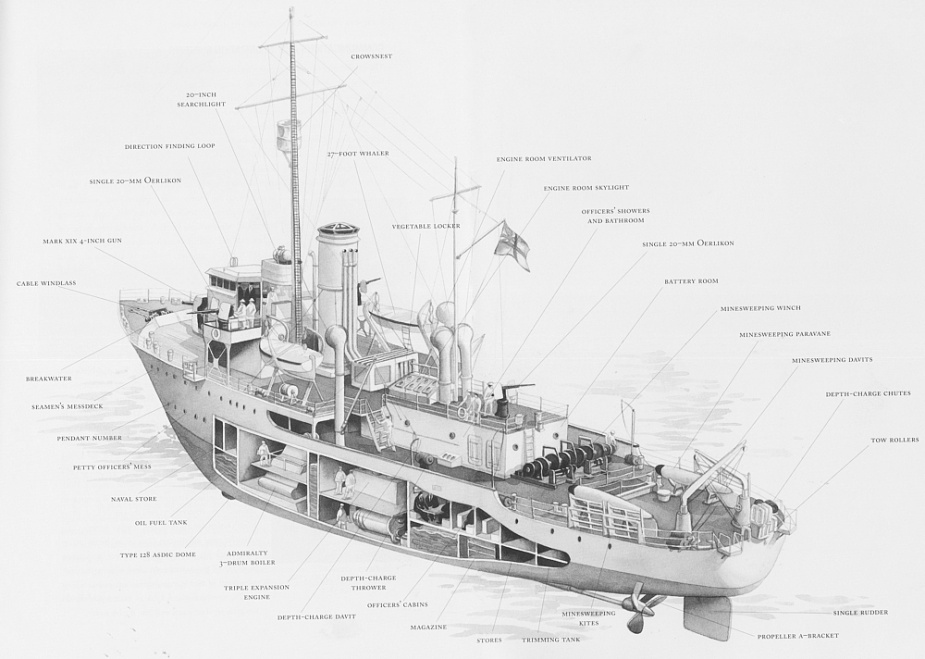
Strahan conducted escort and anti-submarine patrol duties in New Guinea after commissioning.
In October 1944, while in harbour at Morotai, enemy planes bombed the harbour and adjacent targets. Strahan engaged and drove off with main armament and automatic weapons one fighter bomber which attacked its.
Strahan returned to Sydney in April 1945 and then proceeded to Adelaide in May for a refit. On completion it returned to the New Guinea area and resumed escort and patrol duties in the Morotai and Biak areas. In June 1945 Strahan went into action against Japanese land forces for the first time when it bombarded gun emplacements on Kairiru Island.
It then performed escort duties to Tarakan in Borneo and back to Morotai. On the way from Tarakan in August 1945 it sank a Japanese barge and picked up 3 survivors of a crew of 10.
Following the end of hostilities, Strahan proceeded to Hong Kong where it was engaged in minesweeping and anti piracy patrols as a unit of the 21st Minesweeping Flotilla.



